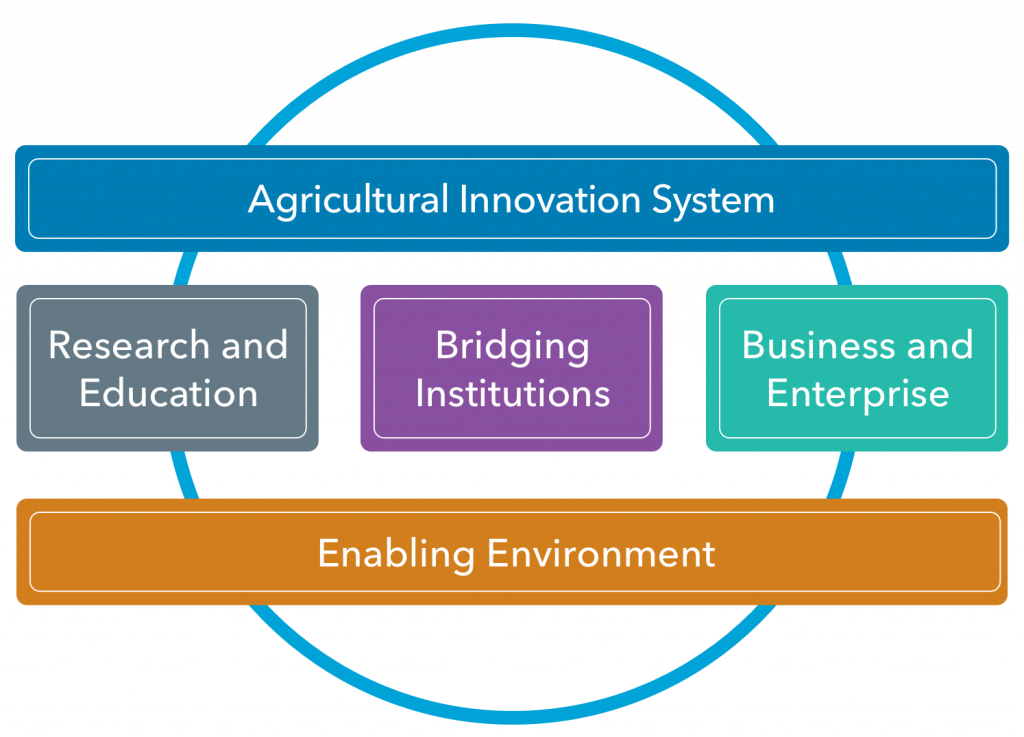An agricultural innovation system is a network of actors (individuals, organizations, and enterprises), together with supporting institutions and policies, in the agricultural and related sectors that bring existing or new products, processes, and forms of organization into social and economic use. Policies and institutions (formal and informal) shape how these actors interact and learn together, and how they generate, share, and use knowledge.

For a more detailed illustration of an agricultural innovation system, please see the Common Framework developed by the Tropical Agriculture Platform (TAP) (2016).
